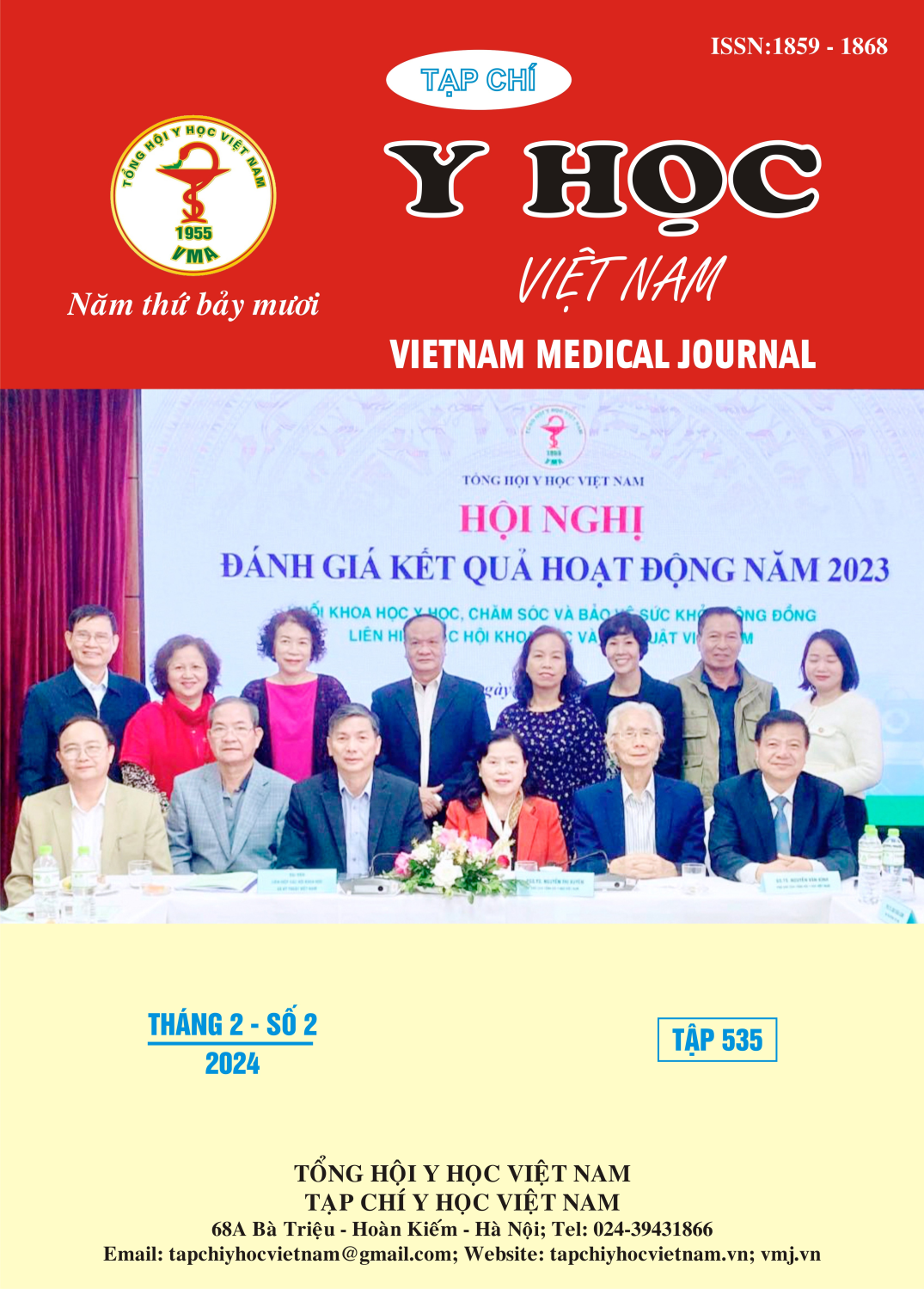INTERNAL ILIAC ARTERY PRESERVATION STRATEGIES IN THE ENDOVASCULAR TREATMENT OF AORTOILIAC ANEURYSMS
Main Article Content
Abstract
Background: Recently, the development of specific endovascular interventions, such as endovascular aneurysm repair (EVAR), has brought many advantages such as significantly reducing blood loss, surgical time, rehospitalization rates, as well as mortality rates for patients with abdominal aortic aneurysms. However, abdominal aortic aneurysms accompanied by iliac artery aneurysms, which occur in over 40% of cases, can make treatment difficult without affecting blood supply to the pelvic area. Therefore, preserving the iliac artery in EVAR is an issue that needs attention and consideration. Methods: Case report. Results: A 61-year-old male patient was admitted to the hospital with abdominal pain and was diagnosed with abdominal aortic aneurysm with accompanying slow pulse, high blood pressure, and type 2 diabetes. Upon examination, the patient was found to have an infrarenal abdominal aortic aneurysm with a maximum diameter of 5.5 cm and bilateral iliac artery aneurysms with maximum diameters of 3 cm. The patient underwent right iliac artery occlusion and a stent graft was placed with a preserved left iliac artery branch. After the procedure, the stent graft was patent, the left iliac artery was open, there was no evidence of leakage, the functions were stable, and there were no symptoms of ischemia in the pelvic region. The patient was discharged after three days and re-evaluated after one week with stable indicators and improved symptoms. Conclusions: Preserving the internal iliac artery is the best option to reduce the risk of ischemia in the pelvic region. However, there should be a consideration between the risks and benefits as well as the skill of the surgeon and the conditions of the practice center
Article Details
Keywords
internal iliac artery preservation, EVAR
References
2. Zhang, Ma TGW, Jia X, Liu X. Novel-Designed Iliac Branch Stent Graft for Internal Iliac Artery Reconstruction during Aneurysm Repair. Annals of Vascular Surgery Annals of Vascular Surgery. 2015;29(2):189-196.
3. Duvnjak S. Endovascular treatment of aortoiliac aneurysms: From intentional occlusion of the internal iliac artery to branch iliac stent graft. World Journal of Radiology. 2016;8(3):275-280.
4. Mehta, Veith M, J F, Takao O, Jacob C. Unilateral and bilateral hypogastric artery interruption during aortoiliac aneurysm repair in 154 patients: A relatively innocuous procedure. Journal of Vascular Surgery Journal of Vascular Surgery. 2001;33(2):27-32.
5. Rayt HS, J. BM, V. LK, G. FN. Buttock Claudication and Erectile Dysfunction After Internal Iliac Artery Embolization in Patients Prior to Endovascular Aortic Aneurysm Repair. Cardiovasc Intervent Radiol CardioVascular and Interventional Radiology. 2008;31(4):728-734.
6. Chaikof El, L. DR, K. EM, M. JB, A. LW. The Society for Vascular Surgery practice guidelines on the care of patients with an abdominal aortic aneurysm. Journal of vascular surgery. 2018; 67(1):2-77.
7. A K, J HR, J HP, R BJ. Endovascular aneurysm repair with preservation of the internal iliac artery using the iliac branch graft device. European journal of vascular and endovascular surgery: the official journal of the European Society for Vascular Surgery. 2010;39(3):285-94.
8. Robalo C, Sousa J, Mansilha A. Internal iliac artery preservation strategies in the endovascular treatment of aortoiliac aneurysms. Int Angiol. Oct 2018;37(5): 346-355. doi: 10.23736/ s0392-9590. 18.04004-x


